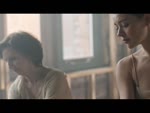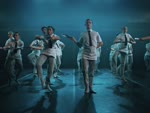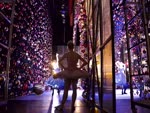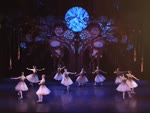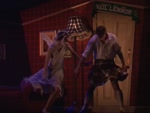SEVEN YEARS AFTER: Fukushima July 2018
Full length video
Please read Understanding catalogue records for help interpreting this information and Using footage for more information about accessing this film.
Title: SEVEN YEARS AFTER: Fukushima July 2018
Reference number: 13703
Date: 2019
Director: d. Yushin Toda
Production company: Japan Desk Scotland
Sound: sound
Original format: unknown
Colour: col
Fiction: non-fiction
Running time: 64.22 mins
Description: Japan Desk Scotland’s seventh documentary about the Fukushima nuclear accident in 2011, looking at the farming of carp in Koriyama City and ongoing research into the levels of radioactivity in water.
Credits:
p. Fumi Nakabachi and Yushin Toda, Japan Desk Scotland
comm. w. Yushin Toda
ph. Fumi Nakabachi
ed. Yushin Toda
m. Taiko performed at the 18th Hina Matsuri held by Japanese Matsuri for Glasgow at Glasgow Botanic Gardens on 2 March 2019 (Performers: Brenda, Eve, Fumi, Haruki, Robert, Sheona and Tamami)
Shotlist:
Filmmaker's synopsis:
This is Japan Desk Scotland’s seventh Fukushima documentary, based on the interviews carried out in July 2018.
Koriyama City, Fukushima, was the number one in Japan in terms of market value of carp, but after the nuclear accident of 2011, demand for Fukushima carp disappeared. Kenji Nanba and Toshihiro Wada, Fukushima University, are engaged in a research to assess the transfer of radio caesium from water and mud of an irrigation pond to carp, and to see a possible way to farm carp with less radio caesium.
Nanba’s team continues the analysis of radio caesium in the water of Abukuma River. The team has found a seasonal change. This research was initiated as a countermeasure against the nuclear accident, but the seasonal change of radio caesium makes it possible to see nature’s process, which a scientist like him wasn’t aware of.
Kencho Kawatsu, takes Japan Desk Scotland to Tomioka Town near the troubled nuclear plant for two consecutive years. The evacuation order was partially lifted for the town in April 2017, but it has the ‘Difficult-to-Return’ zone still under the evacuation order. A part of the zone is, however, made a base where decontamination is to be carried out. Nevertheless, this still leaves the majority of the zone as it is. Norihito Harada of the town office talks about challenges for reconstructing the town.
In Koriyama and Tomioka, damage by rumour is mentioned. In the former, the demand for Fukushima carp outside Fukushima disappeared, and the City Council started a campaign to promote carp-eating among people in Koriyama. In the latter, people in Fukushima are abused outside Fukushima, and some evacuees don’t talk about where they come from.
Fumiko Goto, Professor of American Literature, talks about people’s tendency to seclude themselves from something or someone relating to Fukushima.
As with previous Fukushima documentaries, interviews were carried out with students, graduates of Fukushima University.
Interviewees (in order of their first appearances)
Misaki Usuki, Toshihiro Wada, Kenji Nanba, Sumiyuki Kumada, a staff member of Kumada Fishery, Katsunori Yanai, Shouta Moritaka, Kencho Kawatsu, Norihito Harada, Seiji Ozawa, Fumiko Goto, Miyuki Sasaki, Takeshi Saito, Naoto Suda, Mayuko Noda, and Makoto Matsueda,


